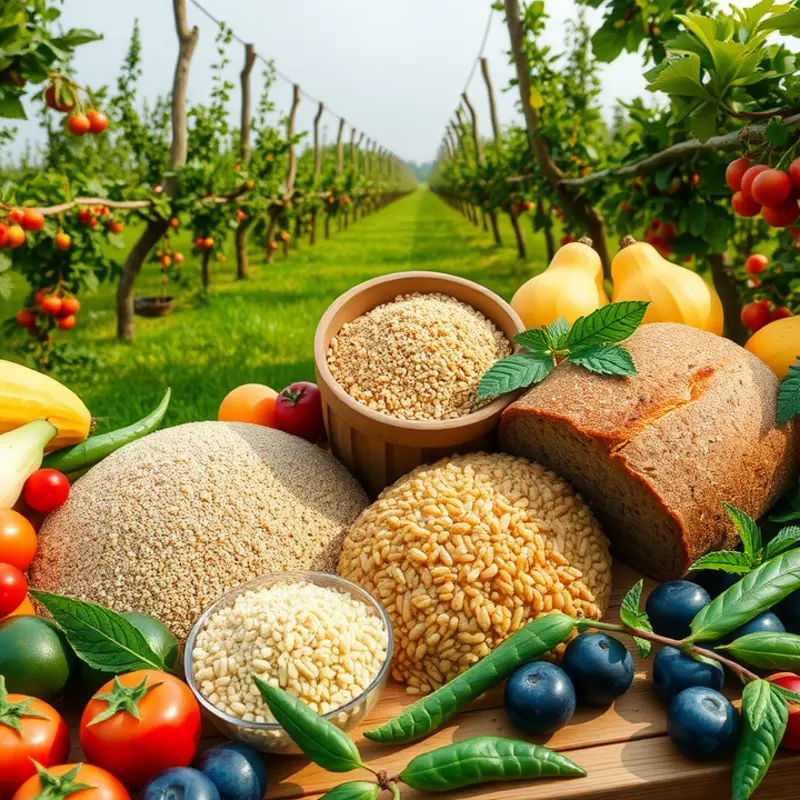Navigating nutrition can feel overwhelming, especially for those just starting their journey to healthier eating. By making practical food swaps, you can effortlessly enhance your meals without sacrificing flavor or enjoyment. This guide presents simple yet effective alternatives that will help you embrace healthier eating habits, supporting your overall wellness. Let’s explore ways to elevate your nutrition with fresh thinking and delicious options.
Delightful Dairy Alternatives

Many people find comfort in dairy, from creamy cheese to cool glasses of milk. However, whether due to lactose intolerance or a shift to vegan living, exploring dairy-free alternatives can bring both nutritional benefits and delightful new flavors to your table.
Milk Swaps
Traditional cow’s milk is rich in calcium and vitamin D, but a variety of plant-based options offer comparable nutrients. Almond milk presents a subtly sweet, nutty flavor, perfect for morning coffee or oatmeal. Soy milk, a popular choice, is packed with protein and mirrors the texture of skim milk closely. For those who prefer a creamy consistency similar to whole milk, oat milk provides a luscious texture and is often enriched with essential vitamins.
For cooking aficionados, coconut milk is a wonderful choice. Its rich flavor complements curries and soups magnificently. If seeking a more neutral taste for baking, rice milk stands as a versatile option. To ensure you’re meeting your nutritional needs, consider fortified versions, which offer additional vitamins like B12.
Yogurt Alternatives
Yogurt serves as a versatile ingredient in smoothies, dips, and as a standalone snack. Fortunately, dairy-free yogurts are expanding in variety. Coconut yogurt, creamy and slightly tangy, aligns with tropical dishes and fruit combinations. For those focused on protein content, soy yogurt offers a robust alternative, often matching traditional yogurt in nutritional value.
Almond milk yogurt provides a delicate texture and pairs well with granola. Meanwhile, cashew yogurt boasts a rich, buttery flavor, suitable for both savory and sweet dishes. Many of these yogurts feature live active cultures, essential for gut health. For more insights into non-dairy probiotics, explore this guide on non-dairy probiotics.
Cheese Choices
Cheese, with its savory satisfaction and versatility, might seem challenging to replace. However, plant-based cheeses are becoming increasingly sophisticated. Nutritional yeast, often dubbed “nooch,” delivers a cheesy flavor plus B vitamins, ideal sprinkled over popcorn or pasta.
Cashew cheese, creamy and tangy, excels in spreads or sauces. Almond-based cheeses offer a firm texture, suitable for slicing or melting over dishes. For a taste reminiscent of mozzarella, tapioca starch-based cheeses melt beautifully atop a pizza. Whether grated, melted, or spread, these cheeses accommodate various dishes while supporting dietary goals.
By embracing these delightful dairy alternatives, you invite a world of diverse flavors and textures into your meals. These swaps not only accommodate various dietary needs but also ensure a nutrient-rich experience, cultivating a balanced and satisfying approach to eating.
Healthier Grains and Nuanced Nibbles

Grains are central to many meals, but not all are created equal. Switching to whole grains is a smart choice for boosting nutrition in your daily diet. Whole grains retain the bran and germ, offering fiber, vitamins, and antioxidants, unlike refined counterparts that shed these benefits.
Consider replacing regular pasta with whole wheat or legume-based varieties. Whole wheat pasta provides more fiber and nutrients, keeping you satisfied longer. Legume-based pasta, made from ingredients like lentils or chickpeas, adds protein and minerals to your dish, swapping empty calories for nourishment.
White bread is another common staple in need of an upgrade. When selecting bread, aim for options high in fiber and low in added sugars. Whole grain breads, sprouted grain loaves, or sourdough can offer a nutritious and satisfying alternative to white bread. Sprouted grains may enhance vitamin levels and improve digestion, thanks to the natural enzyme activity initiated during sprouting.
Snacks often covertly contribute to dietary imbalances. Swap simple nibbles like chips with whole grain or seed-based options. Popcorn, an excellent whole grain snack, is high in fiber and polyphenols, low in calories, and can be seasoned creatively with herbs or spices for a vibrant taste without excess salt or fat.
Choosing the right grains doesn’t stop at health benefits. Mindful ingredient selection supports global efforts toward sustainable consumption. For further insights on how choices impact our eco-footprint, explore how kitchen habits can contribute to a sustainable lifestyle here.
Incorporating these grains into your meals can be as simple or as creative as you like. Use whole grain tortillas or pitas for sandwiches, or prepare grain salads with quinoa or farro. Experiment with grains you may not have tried before, like amaranth or teff, which bring unique flavors and textures to your dish.
Exploring healthier grains and snacks is a journey through textures and flavors that satisfy more than just hunger. They enrich not only our palates but our well-being, one bite at a time. By enriching your plate with these nutritious options, you harness the power of change, transforming a basic meal into one that supports both personal health and the planet.
Final words
Simple food swaps can make a big difference in your daily nutrition without overhauling your entire diet. By selecting alternatives that add more nutrients while keeping your meals enjoyable, you can better support your health goals. Remember, each small change contributes to your overall well-being and empowers you to foster a positive relationship with food. Adventure into the world of nutrition with these swaps—your taste buds and body will thank you!







